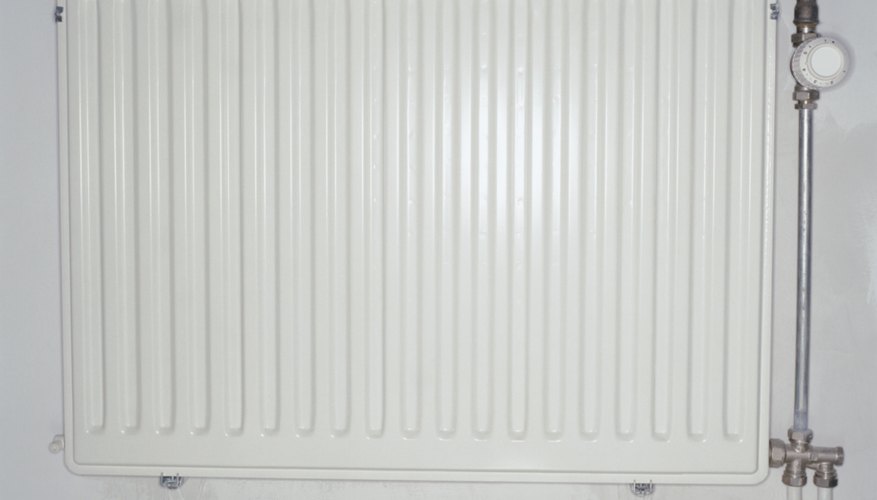Central heating pipes are known to bang, rattle, hum, gurgle and click. Each noise the pipes make signifies a different condition. Clicking sounds usually only occur when the system starts up and turns off. This is because the clicking is caused by the pipes expanding with heat and contracting as they cool down. The solution to the problem is different depending on where the clicking sound occurs.
Check the back of your radiators. They should have plastic clips between the radiator and bracket. These clips prevent the radiator metal rubbing against the metal of the bracket. Go to your nearest DIY shop and buy enough radiator clips for all the joints between radiators and brackets in your house. Loosen the joints and slide the clips into the newly created gap.
- Central heating pipes are known to bang, rattle, hum, gurgle and click.
- Loosen the joints and slide the clips into the newly created gap.
Trace the clicking to its source. Sound travels along the pipes, so the point you hear the noise may not be the location where the sound is generated. If the sound is loudest in a wall, then you will have a problem. If you locate the loudest sound under the floorboards, you will be better able to fix the problem. The reason for the clicking is that the expanding pipes rub against an adjacent joist.
- Trace the clicking to its source.
- If you locate the loudest sound under the floorboards, you will be better able to fix the problem.
Move the furniture away from the location of the clicking and also away from the edge of the carpet. Clear all furniture from one side of the room up to the point of the clicking and lift the carpet.
Buy felt strips from a DIY shop. Explain to the shop assistant why you need it and he will be able to provide you with a pack of the felt that plumbers use.
Turn the heating off and let the pipes cool. Thread the felt strips between the pipe and the adjacent joist. It will be a tight fit. If not, this in unlikely to be the source of your clicking noise. Wrap the felt around the pipe again and again until the entire area where the pipe touches the joist is padded. Turn your heating back on. The heating pipes will not now make a clicking noise. Replace the floorboards, the carpet and the furniture.
- Buy felt strips from a DIY shop.
- Wrap the felt around the pipe again and again until the entire area where the pipe touches the joist is padded.
Identify the point on the wall where the clicking originates if it is not beneath the floor. If you detect the clicking sound in the wall, you probably have a plasterboard wall that the pipes run through. You will have to decide whether it is worth fixing the problem because you will have to smash through the wall. If you cannot live with the noise, turn the thermostat up to maximum and then turn the heating on. When you hear the clicking feel the wall for an area that is warm. This is where the pipe is. Turn the heating off again, smash through the wall and lag the pipes as described for pipes in the floor. Get a handyman in to repair the damaged wall.
- Identify the point on the wall where the clicking originates if it is not beneath the floor.
- If you detect the clicking sound in the wall, you probably have a plasterboard wall that the pipes run through.
